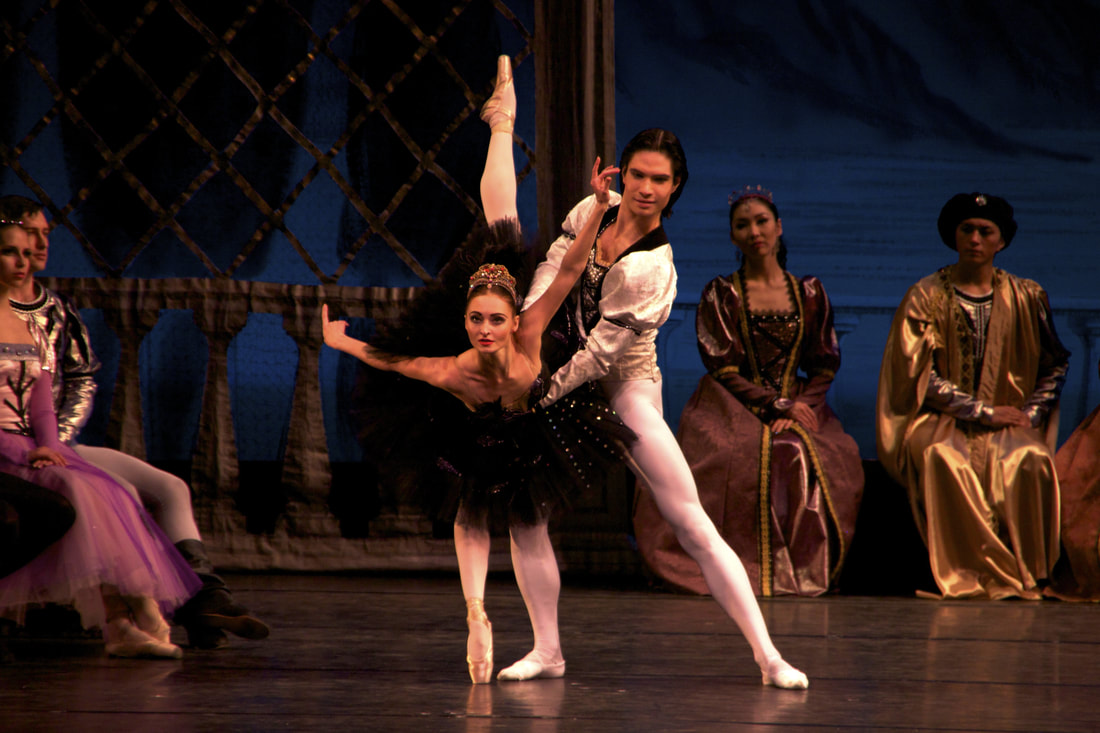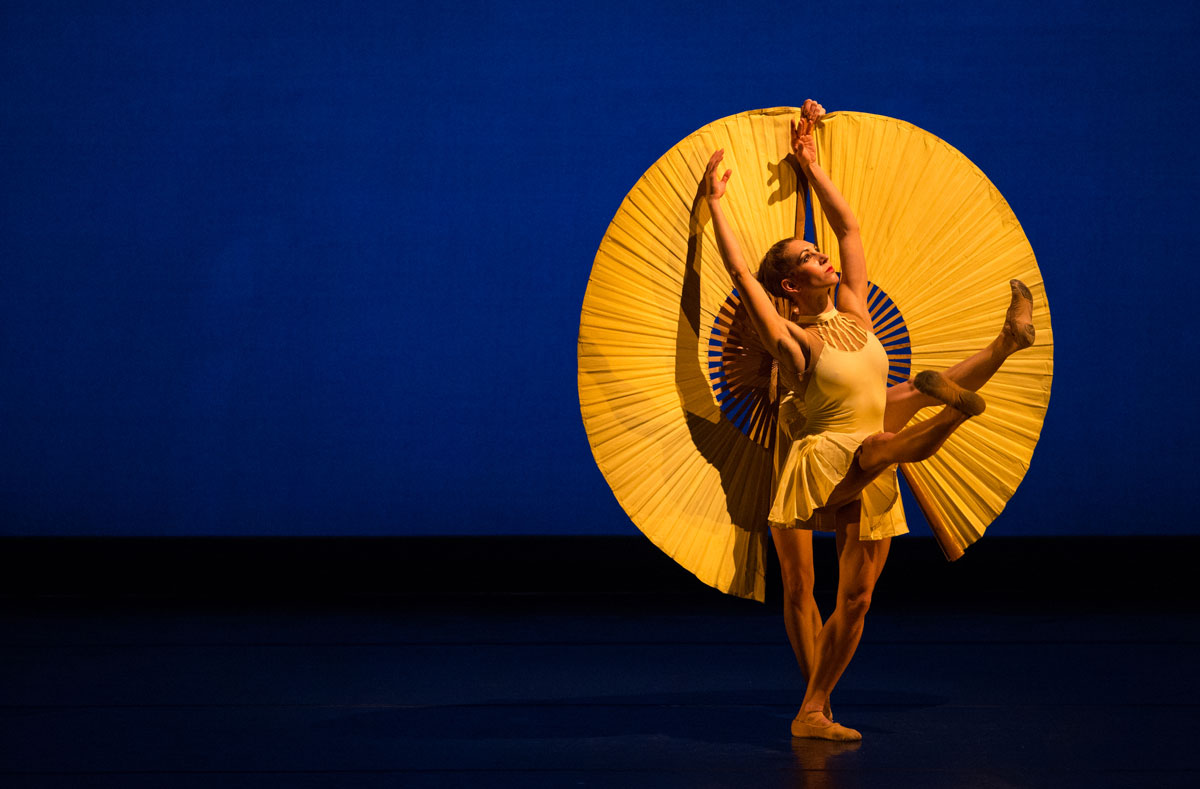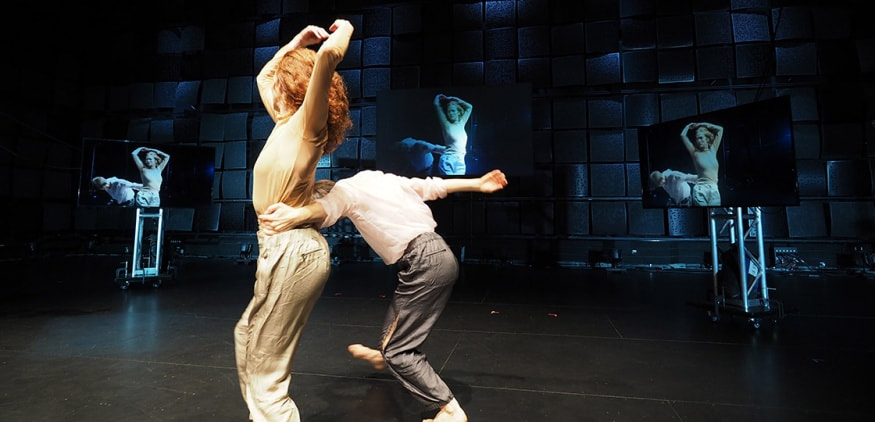No ballet endures like “Swan Lake.” The love story between a young, troubled prince and a bewitched, melancholy swan princess is often viewed as classical ballet’s cliché. But to the devotees, like me, a well-done “Swan Lake” is nothing short of miraculous.
Moscow Festival Ballet didn’t quite meet the miraculous threshold. But the touring company, now making its way across North America, did offer a pleasing rendition of the iconic ballet on Thursday night at Proctors. The dancing, though not exceptional, was enough for the audience to suspend reality and accept the premise of the fairy tale. And the production values were gracefully becoming – offering a lake that shimmered and a palace that glowed. But what sets my heart aflutter is the Tchaikovsky score. The composition, delicate melodies juxtaposed to the crashing crescendos, is what sweeps up an audience to believe that a young man under pressure to marry would find a true love with a large bird. Artistic Director Sergei Radchenko’s handling of the score threatened to toppled the whole production. He chopped it up to accommodate American audiences who don’t want to sit through a three-hour ballet. That’s fine with me – but the snips were obvious. Unfortunately, Moscow Festival Ballet does not have the luxury of an orchestra. A trimmed the score can go unnoticed without glitches at the hands of a skillful music director/conductor. But the more annoying thing was stopping the music for the endless bows the dancers take during the ballet. This was most upsetting during the seductive black swan pas de deux. The music is so bold that the silences for Maria Sokolnikova’s acknowledge of the audience were jarring. Eventually the music resumed, mid-passage without missing a note. And the interrupted audience is expected to return and be tantalized. The mid-ballet bow is a Russian thing that I have come to accept. But I like the American way better – where applause is spontaneous, forcing the action to stop because the audience is overcome with awe and admiration. There is one more Russian – or I should say Soviet -- remnant that was interesting to note. The ending of this “Swan Lake” is a happy one. Rather than the prince and the swan killing themselves, which is the original final scene before the curtain drops, in Moscow Festival Ballet’s “Swan Lake,” the great love between the two overcame the sorcerer who has enslaved the swan princess. Thus, they live happily ever after. During the Soviet era, ballet was supposed to uplift the people – therefore no sad endings. I’ll know when the old regime’s grip on ballet is over when Russians return to the original. Regardless, Moscow Festival Ballet’s “Swan Lake” was a delight, with many of the dancers being singular – again the court jester whose endless tricks with jumps and turns astonished. Sadly, he goes unnamed in the program. The most glorious dancers were not in the lead roles, but were relegated to soloists and corps de ballet. Despite it all, this “Swan Lake” reminded everyone why the ballet has survived more than a century – it remains the best of the best.
0 Comments
Momix dancers in "Sundance," one of 17 sections in "Opus Cactus" On a cold winter night at The Egg, an ensemble of 10 dancer/acrobats/illusionist offered a welcomed respite with an ode to desert. “Opus Cactus” is yet another creation from the animated imagination of Moses Pendleton. As seen on Friday night, it warmed with its reds and yellows, delighted with is its imagery and met all expectations -- once again, proving Momix makes magic.
Like many of Momix’s evening-length formulations, the 2001 “Opus Cactus” takes the audience on a journey to explore every aspect of the subject at hand. As “Opus Cactus” is a southwest safari, the audience experiences its flora and fauna with masterful imagery that only Pendleton’s band of athletic artists could perform. Take for example, the pole dances. In the first, three men, each handling their own long poles, launch off their rods to pose upside down in midair, again and again and again. In the second pole dance, two women straddle poles held aloft. Upright, they hold onto the pole by their inner thighs, and are then spun like pinwheels. It’s all muscle, but it is done with such fluidity and speed, that it appears easy. And it was also done with an eye for detail – line and the aesthetics. Ultimately, audiences are not just marveled by the feat, they are marveled by the beauty. That is the thing. “Opus Cactus” is beautiful even in its most simple gestures. Consider the opening – “Desert Storm.” On a darkened stage, invisible dancers handle tumbling neon balls that appear like electric tumbleweeds. As they blow off and away, the curtain rises on a single dancer who represents a cactus wren. Seen only in silhouette against a glowing orange backdrop, she undulates her body like a bird ruffling its feathers. She bobs her head like a pecking lark and then takes flight, her arms and legs elevated to look like she is soaring. These gorgeous moments tumble onto the stage, one after another. There is the “Ostrich of the Imagination” in which the women and men unite as one creature – she, the head and chest of the large, graceful bird, and he, the rump and the legs. Then there is the “Sidewinder” dance in which the women are whirling dervishes adorned with the poisonous snake followed by the gila monster, the venomous lizard, a conglomerate of four men writhing menacingly along the length of the floor. There are many humorous moments too, such as when the dancer who becomes a lizard using his bottom as its head and the upside down heads, without bodies, singing along with Mickey Hart’s “Pigs in Space.” Much of Momix’s wizardry is found in Pendleton’s astute selection of music from Adam Plack, Brian Eno and Transglobal Underground. It’s a combination of Native American, African to Bollywood sounds that are all hypnotic, elevating the sense and spurring the audience to buy into the amazing visuals. It ends with “First Contact,” a glorious finale with women hanging from swings gliding over the audience as a giant puppet with a skeleton head bobs along. It was an exquisite end to a dazzling performance. Jodi Melnick, left, with Elena Demyanenko Despite 40-plus years of watching dance, I’m usually perplexed by the works shown at EMPAC. I almost always walk away wondering “what the heck was that all about.” But I also find that these dances are imprinted in my memory. A naked man crawling into spaces too small for his frame, Frankenstein-like figures screaming in the faces and throwing balls at the audience and a quiet soloist whose repetitive hum was to lull the spectators to sleep.
What these pieces have in common is exploration with technology. And on Saturday afternoon, dancer/choreographer Elena Demyanenko and filmmaker Erika Mijlin once again fulfilled EMPAC’s reputation to baffle and provoke by offering a world premiere that resonates on a personal and societal plane. Titled “echo/archive,” the dance with Demyanenko, Eva Karczag, Jodi Melnick and Dana Reitz uses moving cameras, screens, sounds and lights to amplifie and/or obscure. Through a series of solos and duets, the piece enlarges the movement with technology, showing angles the audience would not naturally see, by projecting them on slowly moving screens. Sometimes the images are doubled or are multiplied to infinity. At other times, the projections play with double exposures – two dancers not together on stage, but together on screen. Still, at other moments, the stage is so dark, that only the screen – usually just a square of color like orange or blue – is the only thing that illuminates them. The point is that the screens serve to remind us that everything we do has a ripple effect, and that those ripples are memorialized in our being. They are there even when we can’t see them, even when we are not there. But that is just the framework. “echo/archive” is really about relationships – the relationships between Demyanenko with Karczag, Melnick and Reitz. And how they are echoed and archived. Before I go there, I want to applaud Demyanenko, a former Trisha Brown dancer, for pulling in Karczag, Melnick and Reitz for her work. These are three mature dancers with decades in the field of modern dance. They have always been explorers and it was wonderful to see them again. And while Demyanenko is younger, it’s clear that the trio challenges her physically. With Karczag (also a former Brown dancer), Demyanenko is like a Tai Chi student, freeze-framing moments with Karczag’s solid but liquid support. These two are one like mother and child or master and mentor. But in the end, they face each other as if Demyanenko is fit to stand on her own. Melnick, on the other hand, is a fireball. She alone commands the space as she kicks and spins slicing the space at astonishing speeds. With Demyanenko, the two are like a puzzle that snaps together and then springs apart. Melnick is the launch Demyanenko earns. The ending with Reitz is more mysterious. Reitz floats, her arms and hand gestures are delicate and graceful. The two come together in an ever-shifting landscape of light that continually reveals and cloaks them. As the scenarios unfold, the ubiquitous screens fade. What this says about aftereffects of our actions and relationships is uncertain? Maybe it’s a judgment on our screened obsessed society. Regardless, in the end, Demyanenko is at peace; the audience, still pondering. |
Wendy
|



 RSS Feed
RSS Feed
